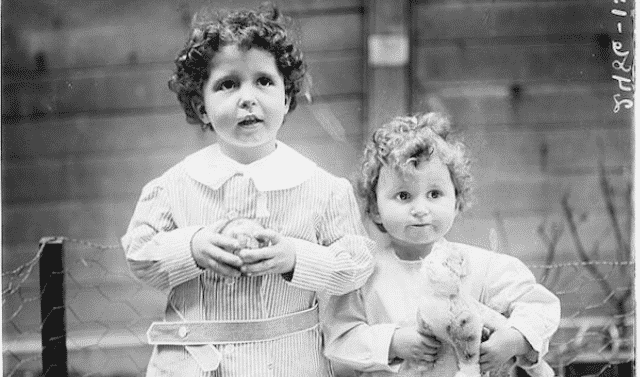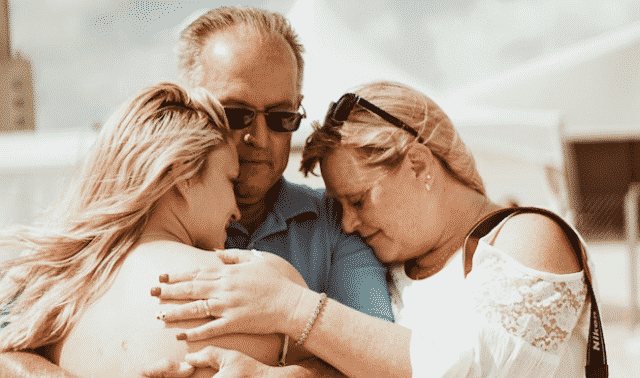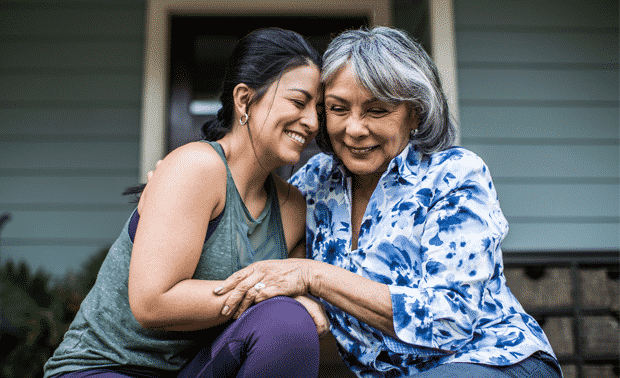
If you’re an adoptee, the search typically begins by contacting the agency where you were adopted to ask for “non-identifying information,” explains Jill Ekstrom, a researcher who’s also both an adoptee and a birth mother. This often provides more detail than the agency gives the adoptive parents, and might include the date the adoption was finalized, the number of siblings in the birth parents’ families, hereditary health conditions and nationality information. It’s likely to also mention interests, physical appearance of the birth parent(s) and details about the adoption circumstances.
Next, you can place a note with the adoption agency stating that you want to be contacted by a birth parent. Whether or not they want contact, birth parents can file current medical information with the adoption agency, so you can also check for that information.
Many states have moved toward opening adoption records and allowing adoptees to receive even more complete birth information, typically the original birth certificate. “Open” records may also mean adoptees can access all the information in the adoption case file, though some states require “compelling medical reasons.” Cathy Barlow, a researcher and member of the American Adoption Congress, says this might range from the adoptee simply wanting to determine whether his asthma is hereditary to needing a live-saving organ transplant: “The range of what judges consider compelling is totally arbitrary.”
Many states offer a “court intermediary” option. For a state-established fee, a court-appointed volunteer researches adoption records, and is permitted to contact birth relatives up to three times.
Other states are “registry only,” meaning you can obtain information only if your birth parents also register, saying they want data released. State registries are usually free or charge only a nominal fee. Some require participants to undergo counseling. Most offer no provisions for siblings and extended family and won’t accept registration for out-of-state adoptions.
You can also sign up with private registries such as the International Soundex Registry, the world’s oldest adoption registry. Soundex registrar Tony Vilardi cautions that registries are “only a service of hope, with no guarantee of reunion.” Other registries are sponsored by state social service agencies, adoption agencies and adoption support groups.
You can find help, both practical and emotional, in searching for your “hidden roots” through an adoption support group. Some groups include just one segment of the adoption “triad”: adoptee groups, birth parent support groups and adoptive parent groups. Others involve everyone affiliated with adoption. Some search agencies actually require that you join a support group.
Other steps you can try are similar to conventional genealogy: Don’t forget to search in personal or family documents and to ask adoptive parents what they remember. One adoptive mom remembered that a social worker said her daughter’s birth mother’s name was Esther. A birth mother’s unusual last name was inadvertently left on another adoptee’s final adoption decree.
You can also employ a professional searcher. Dunn says, “It’s surprising that most people choose professional searchers not because they couldn’t search themselves, but more often because they don’t have the time, or the emotional investment is too close to the heart and raises issues that the searcher has kept himself detached from—such as, ‘What happens if they don’t want to talk to me?’”
She adds that other searches do require the assistance of a professional, because of their complexity or because “individuals, in their zeal to find birth relatives, will burn bridges. Once a bridge is burned, it makes it really hard for a professional to make headway, because doors have been closed as to what could have been helpful resources.”
Professional searchers can also help with the actual reunion. “We prepare them to make the first ‘contact call’ after they find their families,” Dunn says. “Or they ask us to be a third party and make the first call. If they make the first call and it doesn’t go well, they ask us to call and try again.”
Dunn suggests consulting a local adoption support group and checking Better Business Bureau records when choosing a professional searcher. “Try to find someone who has already experienced a successful search through the searcher you are considering.” It’s a red flag if a searcher “promises” he can find someone, says Dunn: “The harsh reality is that they may never find the person you seek.” (Keep in mind that you must pay for services whether or not the search succeeds. “It’s like not paying your doctor if he can’t cure you,” Dunn says.)
She suggests asking a searcher to provide a preliminary review before accepting your case. “If we feel the scenario isn’t encouraging, we try to refuse at the beginning,” Dunn says. Examples of “grim realities” that might discourage a search are “living in a non-search-friendly-state, realizing that information is erroneous or has been falsified, and, in the case of private adoptions, waiting too long until the few people who have information have died.”
When adopted children start asking questions about their identity and biological heritage, how should you answer? Karen Calaway, who has served as a birth parent and adoption service counselor in thousands of adoption reunions, says that young adoptees’ questions are often simple and straightforward and can be answered from the non-identifying information supplied by the law firm or adoption agency that facilitated the adoption. “Even a young child can learn about his origins bit by bit in casual conversations,” she says.
She’s found that young adoptees generally ask these questions about their adoptions:
• Why didn’t my birth mother keep me?
• Wasn’t she sad to give away her little baby?
• What did my birth mother look like?
Young children will most likely be more interested in how their birth mother looked or what clothes she wore rather than health and genetics, says Calaway. “Questions about birth parents should be answered at a child’s level, as honestly and positively as possible,” she adds. “A young child’s interest will be often be satisfied with information about eye and hair color and talents and hobbies rather than describing a detailed life history.”
Calaway suggests that a parent who has little specific information might consider saying, “Your birth mother loved you and that’s why she chose adoption. I know it takes a lot of strength and maturity to make a hard decision like this.” She says that a parent might paraphrase the circumstances by stating it in a child’s terms. For example: “Making the decision to place you for adoption would be like you deciding that something you want really bad would be better off if someone else had it. Like a child who really wanted to keep a puppy, but realized he couldn’t take care of it, because he lived in a small apartment and both he and his parents were always gone at work and school. It would be a brave decision if he decided it would be better for the puppy if he gave to a friend who lives on a farm who also wanted to keep it and could take really good care of it.”
If photos or other facts are available, or even if it’s possible for a child to meet a birth parent, Calaway says, this helps him see that the birth parent is a real person rather than a fantasy. “A parent’s accurate answers to a child’s questions are like a drink of water to someone who is thirsty. They can handle the truth better than trying to create their own reality from a mystery. Choose all the positive information you can without making anything up.”
But Calaway says, “I don’t think I would ever tell an adopted child that her birth mother was raped. If that were the situation, I would possibly say that the birth mother only knew the birth father for a short time, or that they didn’t have a long relationship and that she didn’t really want to get pregnant.”
Teen adoptees ask somewhat different questions, as they struggle to establish their own identity and wonder about their biological roots. Calaway says teenagers generally ask four major questions about their adoptions:
• Why was I placed for adoption?
• Did my mother hold me before she gave me up?
• What is my ethnic and genetic background?
• Did my birth mother love me?
She suggests parents answer a teen’s questions truthfully and not hold back any information. If parents don’t know the answers, they can seek non-identifying information from the adoption agency or law firm that handled the adoption; once a child reaches 18, he can request his own non-identifying information. “You may be able to find a social worker who actually worked with the birth mother and could offer some additional insight,” Calaway says. “You might want to consider maintaining an ongoing relationship with that social worker, who could answer different questions as the child grows up.” You could also consult a post-adoption counselor at an adoption agency.
If you’re considering a full-fledged search for your child’s birth parents, Calaway suggests doing so before the age of 12 or after the child is 18 — avoiding the more emotionally charged teen years.
While professional search services and costs vary widely, Dunn suggests that “anything over $3,000 would be inappropriate.” How long does it take? “If it’s not solved in the first year, it’s because we’re hitting brick walls. We don’t quit or give up. Sometimes, after letting the dust settle, we may get someone else to respond or the laws or climate of the particular search may change.”
Professional searchers can help if you’re a birth parent, too. When Terry Wesley decided to look for his son, he turned to researcher Sharlene Lightfoot. A week after he gave Lightfoot his non-identifying information, she called back with his son’s name: John McNally. Saying he was a friend, Wesley succeeded in getting the phone number where McNally worked, in Denver. He left a message, using Lightfoot’s number, and waited anxiously.
When McNally returned the call, Lightfoot told him she’d call him back because there was a long-distance charge. Then she placed Wesley on a conference call, so he could hear his son’s voice for the first time. Wesley recalls, “It was the most highly emotional moment of my life. All the feelings during my years of wanting and not knowing surfaced as I moved toward the one moment when he would either accept or reject me.”
He heard Lightfoot say, “There’s a man in Salt Lake City who has something in common with you and is trying to reach you. It’s your birth father.”
“You’re kidding me,” said McNally, who was standing in a phone booth.
Moments later, she gave him the Wesleys’ number and instructed him to wait five minutes so she could give his birth father a call. Wesley was still screaming with joy when his phone rang.
McNally recalls, “It was 10:30 at night and a blizzard outside. We talked for two hours and I never felt the cold.”
Lightfoot also helped Rulon Pudlewski search for his birth mother, starting with his non-identifying information. After just two days, she called with a name: Ruth Ann Adams Wilson. Calling Wilson, Lightfoot got the answering machine several times before a live voice that also sounded like a computer answered.
Wilson explained that she rarely answered her phone because speaking was difficult after throat cancer surgery. She said, “I died three times on the operating table. I knew that the only reason I was brought back was that there was something unfinished in my life related to the child I gave up.”
Finally hearing his mother say, “Hello, son,” Pudlewski burst into tears. She told him, “I knew if you grew up to be anything like me, you would find me.”
They met a few weeks later. Pudlewski brought a bouquet of baby blue balloons with a card reading, “It’s a boy!” to the train station. During her visit, Pudlewski’s adoptive parents held a 64th birthday celebration for his birth mother, with a cake inscribed, “Happy Birthday, Mom.” Pudlewski’s adoptive mother told her, “Thank you for giving us such a wonderful son and being able to sacrifice him so we could have so much happiness. Now we can share the happiness together.”
What usually happens after long-lost birth parents and adoptees meet? “The process completes everyone,” says Lightfoot. As the relationship continues, however, there are ups and downs; sometimes one party will want a closer relationship than the other. Says Dunn, “While the titles ‘mother’ and ‘father’ don’t always work, the outcome is often rich meaningful friendships. How can anyone have too many people who care about them?”
After Terry Wesley and his wife met his son, McNally moved to Utah and lived with the Wesleys for two years. He now has his own apartment, but he and Wesley see each other often. His adoptive parents visit and the two families have formed a strong friendship. Wesley says, “He had great parents — I’m just glad I’m part of his life now.”
For their part, of course, adoptive parents may not be so readily accepting. Baran advises adult searchers to tell their families, “I am an adult. I am not doing this against you—I’m doing it for me.” After the search, the relationship may actually be strengthened, Baran adds: “The adoptees know that the parents who raised them are their real parents, and that the birth parents are important, but strangers.”
And adoptive parents are increasingly taking part in helping their children search for their biological roots. Meeting birth parents isn’t the taboo it used to be, and many adoptions today are open from the beginning.




